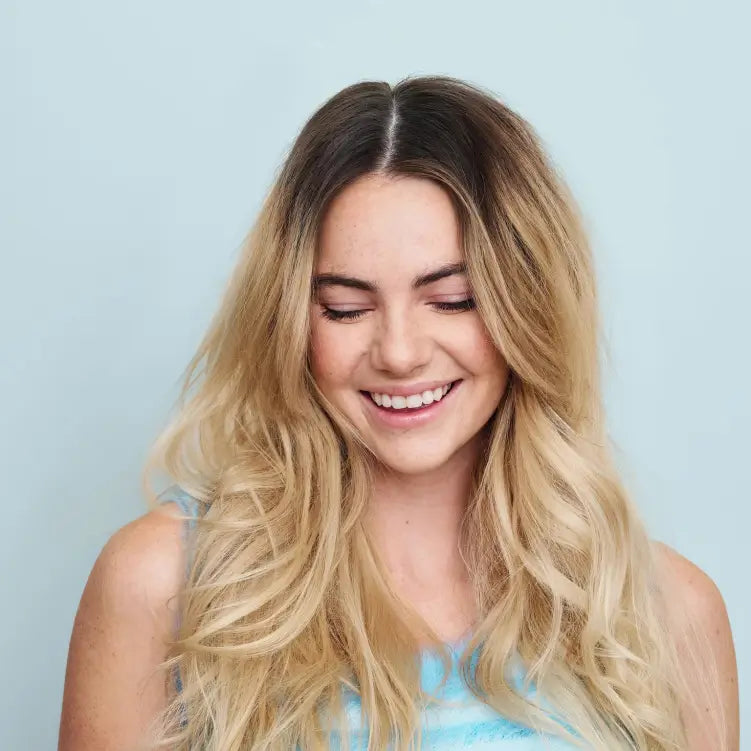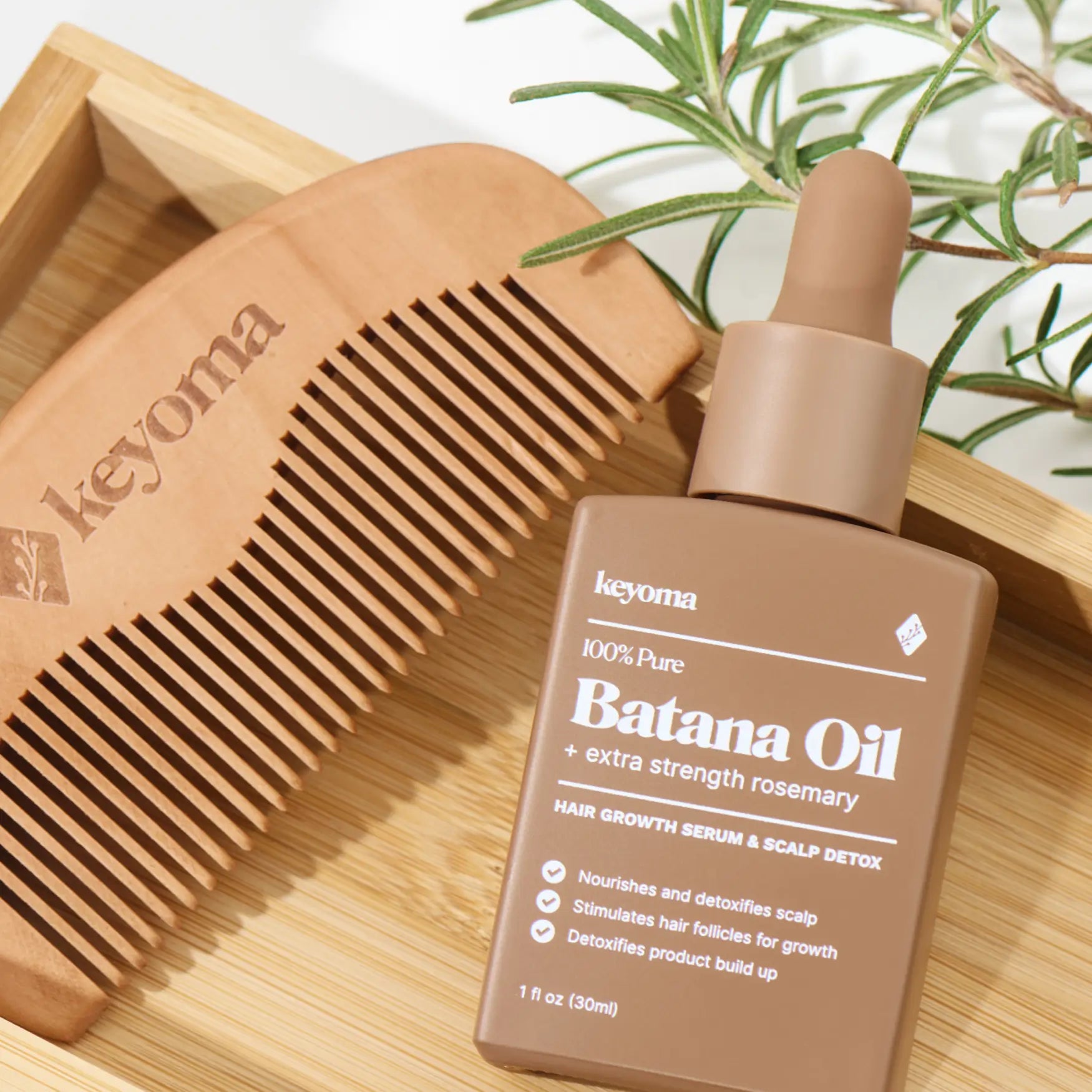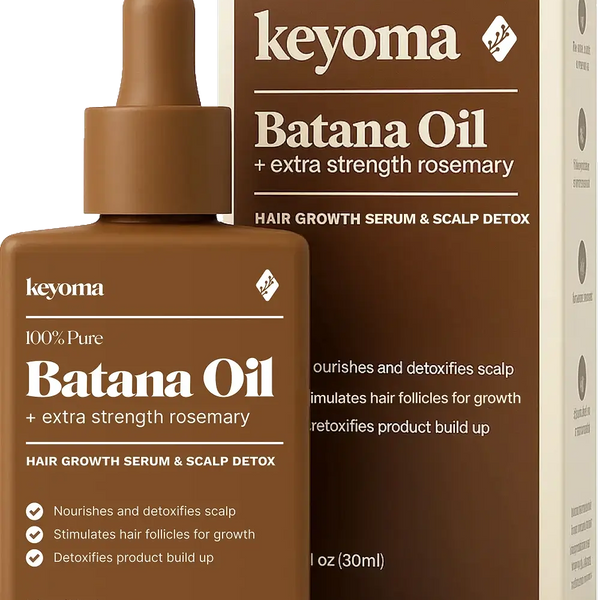In this article
Sometimes a pop of color is exactly what you want. Switching up your shade can make you feel refreshed and gorgeous. A small change often works like a quick reset for your mood.
Whether you opt for subtle balayage or bold blondes and reds (or pinks and blues), playing with color can feel empowering and fun.
What’s not fun is dealing with dull, faded, brittle hair only a week after the salon. Color-treated hair just needs more care if you want it to stay vibrant and healthy.
That extra attention helps your strands hold color longer, so you keep that fresh-from-the-salon look.
Key Takeaways
-
Color-treated hair requires specialized care since dyeing opens cuticles and increases damage risk.
-
Use sulfate-free color-safe shampoo, condition deeply, wash less often, and rinse lukewarm.
-
Limit heat styling, protect from UV, and avoid chlorine to reduce fading.
-
Space coloring sessions, use tone-correcting shampoos, and moisturize regularly to maintain vibrancy.
What Is Color-Treated Hair
Before getting into care tips, it helps to define colored hair. Simply put, it’s any hair that’s been altered with dye to change the natural shade. Whether you go subtle or transform completely, coloring lets you explore new looks and express yourself.
There are many dye types and techniques, but they share a core step: chemicals open the cuticle so color molecules settle into the hair shaft. That process can stress hair, which is why knowing how to maintain colored hair matters.
From semi-permanent and demi-permanent to permanent color, you’ll find a full range of options. Whatever you choose, a bit of added care keeps dyed hair looking lively and healthy.
Why Color-Treated Hair Needs Special Care
Keeping color bright takes specific habits. Chemical processing changes hair’s natural structure, which can make dyed hair more prone to damage and fading than virgin hair.
So it’s important to protect the pigment and preserve shine as long as you can.
Routine maintenance, including periodic touch-ups, helps prevent fading and keeps tone consistent between salon visits.
Use a color-safe shampoo and conditioner designed to nourish and protect treated hair. Also limit heat, since high temperatures can strip vibrancy and leave hair flat.
With the right routine, your color lasts longer and you feel confident showing off healthy, glossy hair.
15 Easy Ways to Care for Color-Treated Hair
An effective plan for caring for colored hair combines the right products with gentle techniques to extend life and shine. After a dye job, build a routine that keeps hair strong and reduces frizz.

Two simple moves: reach for a color-protecting shampoo and add a deep conditioner on repeat.
Here are more ways to keep hair hydrated and healthy after coloring.
Choose Shampoo Formulated for Color-Treated Hair
After coloring, stick with sulfate-free cleansers and shampoos. These are essential for limiting damage and pigment loss. Sulfates can strip moisture, leaving hair dry and brittle, which lets added color leach out and fade.
Deep Condition Regularly to Repair Color Damage
Regular deep conditioning brings back nutrients and moisture, which is critical for color longevity. Support your strands with deep conditioners, leave-ins, or hot oil treatments to protect hair and slow fading.
Wash Your Hair Less Often
Another color-care essential is washing less often to preserve natural oils and pigment. Aim for no more than two to three washes per week.
Each wash removes protective oils from the hair and scalp. I noticed that spacing washes by one day kept my color brighter. Those natural oils help maintain gloss and prevent brittleness and dryness.
Use Purple or Blue Shampoo to Balance Color
Specialized toning shampoos can help preserve tone and reduce brass. If you’re naturally brown, black, or red and went silver, platinum, or blond, a purple shampoo helps cancel brass and maintain that blond luster.
Choose sulfate-free formulas with gentle ingredients. Use them once weekly or every other week, not at every wash, so you don’t over-deposit purple pigment.
Blue shampoos target brassy tones in brunette dyes. When too much red shows through, blue pigments help correct. As with purple versions, keep it sulfate-free.
Do Not Skip Moisturizing Natural Hair
Curly and coily hair types can be more vulnerable to damage, so take extra care when coloring. If you already follow a moisturizing routine, keep it going so hair is less likely to become dry or fragile.
Make sure your products are free of sulfates, since they speed color loss from the cortex. Protective styles like braids can also help you retain moisture.
Turn Down Your Shower Temperature
Cooler showers help seal the cuticle and slow fading. A close friend with a sensitive scalp saw less fading after cooler rinses. Wash and rinse with cool to lukewarm water, focusing on the roots and scalp, to help preserve pigment. Hot water speeds bleeding and dull tone.
Pick conditioners made for color-treated hair. A solid moisturizing routine helps repair dry, damaged strands.
Let Hair Dry Naturally
Wondering how to dry dyed hair? Minimize heat. Blow-dryers can cause cracking and brittleness, which lets dye escape. When possible, towel off gently and let hair air-dry the rest of the way.
Use Protein-Infused Gel Before a Coloring Treatment
Coloring can leave hair fragile and more porous. Strengthening with a protein-rich pre-color treatment can reduce porosity so pigment bonds more evenly. The healthier your hair is going in, the better the outcome. Look for pre-color protein products made for this step.
Avoid Going to Bed With Wet Hair
Give hair enough time to dry before sleep. Going to bed with wet hair can cause friction, breakage, and damage. If you have long hair and need to sleep while damp, braid it loosely instead of pulling it into tight buns or ponytails.
Sun Exposure Speeds Up Fading in Color-Treated Hair
Limit UV exposure on colored hair. For long days outside, wear a hat or head covering to shield from the sun. UV rays dry out hair and cause breakage, which accelerates pigment loss.
Use a Hair Mask Instead of Conditioner
Once a week, swap your conditioner for a mask made for color-treated hair. These help restore the outer protective layer.
Choose sulfate-free options. Typically, you’ll dampen hair, apply the mask, cover with a shower cap, and wait the directed time before rinsing. Masks condition dyed hair deeply and help reduce fading.
Limit Heat Styling
Another key tip is to limit hot tools, which can quickly dull color. Frequent use of curling irons, flat irons, or crimpers accelerates fading on color-treated hair.
Always apply a heat protectant when you do use hot tools on dyed hair.
Heat pulls moisture from strands and weakens them, letting pigment escape. A protectant helps reduce moisture loss and shields against humidity. If you can skip hot tools entirely, that’s even better for your color.
Give Your Hair Occasional Breaks From Coloring
Each synthetic dye session opens the outer cuticle. Bright shades on dark hair often require bleaching first, then depositing vivid color. Taking periodic breaks gives hair time to recover while you focus on repair and strength.
Avoid Styling Products With Harsh Chemicals
Right after coloring, keep harsh chemicals away from your hair. Many sprays and stylers contain alcohol, which can dry hair, and other agents that lift the cuticle and let pigment escape.
If you’re wondering whether to use the product after dyeing, the answer depends on the formula. Take a moment to read labels and choose gentler options.
Avoid Chlorine on Color-Treated Hair
Pool chlorine can shift color-treated hair. Blondes may see a green tint, and other shades can be affected too. If you swim, wet hair first and add a leave-in conditioner or coconut oil to create a barrier.
A swim cap offers extra protection. After swimming, use a gentle clarifying shampoo to remove chlorine residue.
Do’s and Don’ts
You’ve covered the core care steps. Now keep color longer by turning them into simple rules you can repeat.
For instance, after a fresh dye job, hold off washing for at least 72 hours before your first shampoo to help pigment settle and stay put. Protect from sun and heat, then keep it consistent. Follow these color safe rules.

Do’s
-
Hold off on shampoo: Wait a full 72 hours after coloring before your first wash to protect pigment.
-
Add UV defense: Choose hair products with UV filters to shield strands from sun damage.
-
Keep moisture up: Hydrate and nourish regularly to support shine and longevity.
-
Skip shampoo occasionally: Now and then, cleanse with conditioner alone for a gentler refresh.
Don'ts
-
Avoid chlorine: Limit pool and ocean exposure, since chlorine and salt can fade and weaken color.
-
Watch humid air: Excess dampness encourages frizz and makes color-treated hair harder to manage.
-
Don’t over-color: Too-frequent dye sessions can thin and damage hair. Build in recovery time.
-
Skip double processing: Avoid stacking chemical services that add unnecessary stress and fading.
-
Minimize heat: Use hot tools sparingly to protect hair health and preserve color.
How to Prevent Damage and Dullness in Color-Treated Hair

Whether you visit a trusted colorist or color at home, your goal is to protect hair afterward so the shade stays fresh and bright. Treat hair weekly with a rich in-shower mask, ease up on hot tools, and embrace your natural texture to give strands time to recover.
Always use heat protectant, lower temperature settings when possible, and work efficiently. Stretch the time between washes so natural oils can replenish. Your ends are the oldest and most fragile, so keep them coated with a lightweight serum, moisturizer, or oil.
Protect Your Color With a Simple Routine: Start This Week With Keyoma
Treat fading like a budget, not a mystery—never stack hot tools, long washes, and sun on the same day. Color holds when you control temperature and time. Keep rinses cool and wait a full 72 hours after coloring before your first shampoo so pigment can settle. If your towel shows tint, widen the gap between washes and lower water heat.
If brass creeps in, rotate a purple or blue shampoo once a week while keeping the rest of your routine sulfate free. UV speeds dullness, so cover up on bright days and save heat styling for rare occasions. For tone maps, cool-rinse routines, and color-safe picks, explore the Keyoma Hair Care blog.
Featured Product
100% Pure Batana Oil + Rosemary









